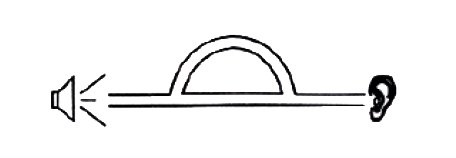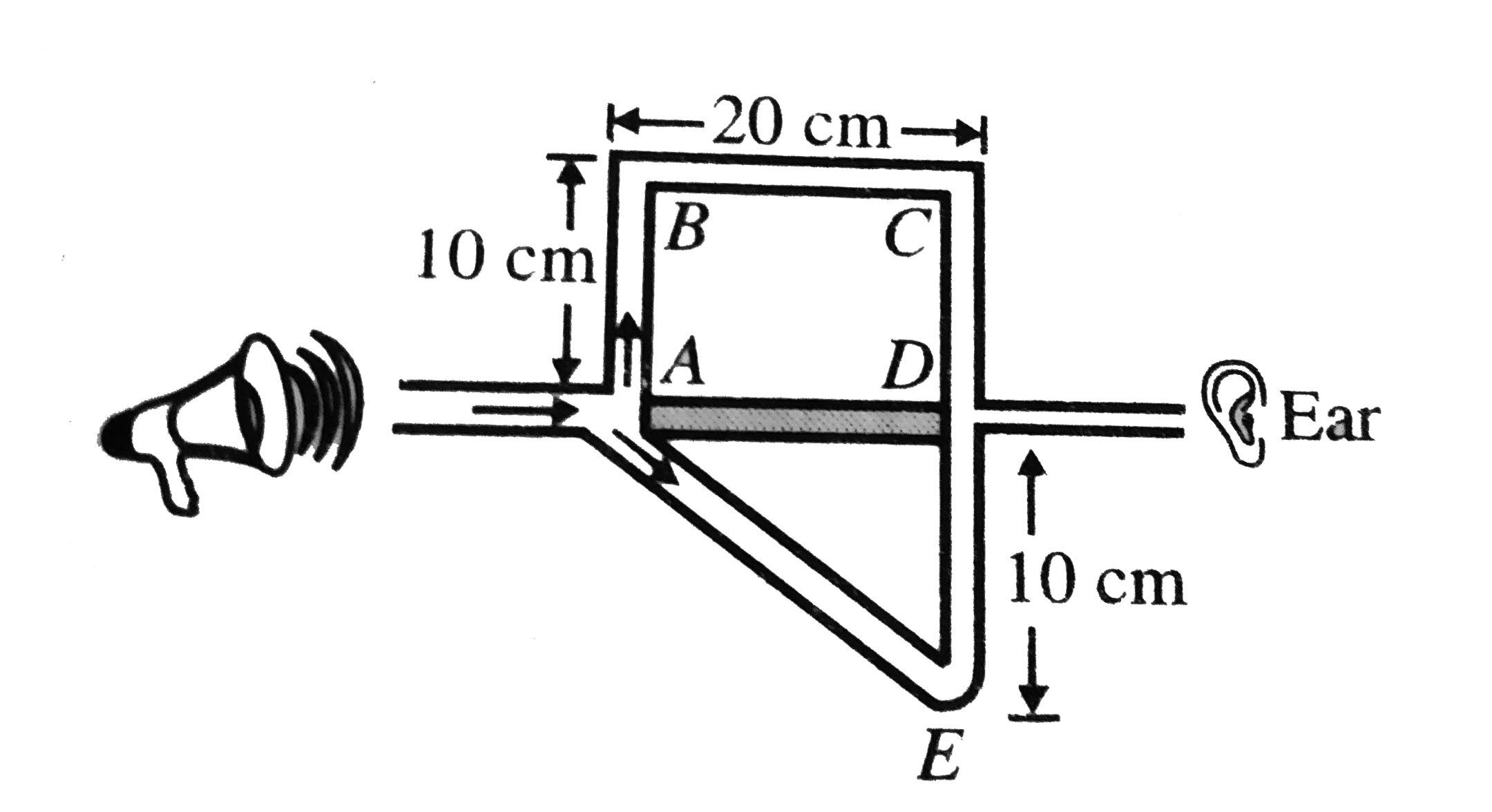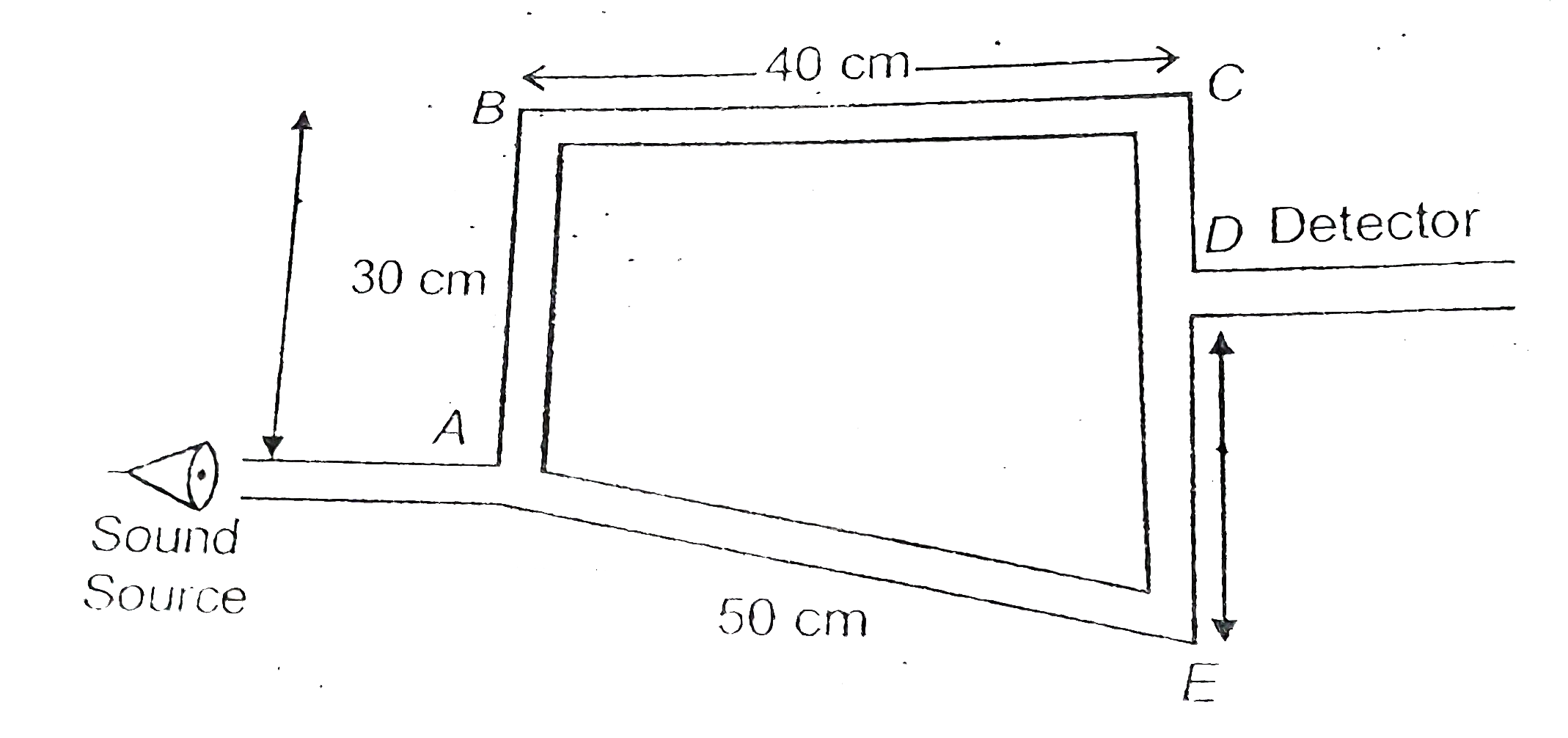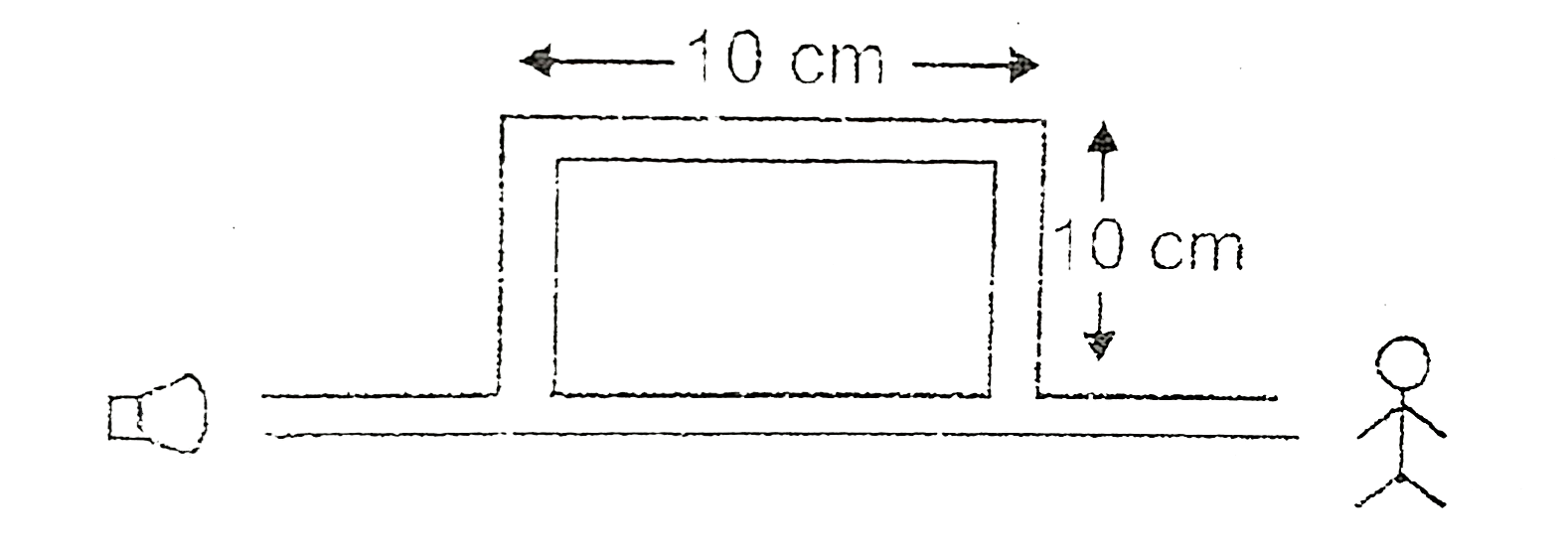Figure shows a tube structure in which a sund signal is sent from one end and is received at the other end.The semicircular part has a radius of 20.0 cm. The frequency ohet sound source can be varied elertronically between 1000 and 4000 Hz. Find the frequencies at which maxima of intensity are detected. The speed of sound in air =3400ms−1.


Path difference Δx=πr−2r=(π−2)r
For maximum intensity
Δx=nλ
(π−2)r=nλ=nvf
f=nv(π−2)r=n×340(3.14−2)×0.2
=1491nHz
n=1,f=1491Hz
n=2,f=2982Hz
n=3,f=4473Hz
The frequencies in the given range are 1491Hz and 2982Hz.
Topper's Solved these Questions
Similar Questions
Figure shows a tube structure in which a sound signal is sent from one end and is received at the other end. The semicircular part has a radius of 10.0 cm. The frequency of the sound source can be varied from 1 to 10 kHz. Find the frequencies at which the ear perceives maximum intensity. The speed of sound in air =342m/s

View SolutionFigure 7.20 shows a tube structure in which signal is sent from one end and is received at the other end . The frequency of the sound source can be varied electronically between 2000→5000Hz. Find the frequencies at which maxima of intensity are detected . The speed of sound in air 340m/s.

View Solution
Knowledge Check
Figure 7.75 shows a tube structure in which a sound signal is bent from one end and is received at the other end . The semicircular part has a radius of 20.0cm. The frequency of the sound source can be varied electronically between 1000and4000Hz. Find the frequencies at which maxima of intensity are detected. The speed of sound in air =340m/s.
 A1490Hzand2980HzB1490HzC2980HzDnone
A1490Hzand2980HzB1490HzC2980HzDnoneTwo pipes have each of length 2 m, one is closed at on end and the other is open at both ends. The speed of sound in air is 340 m/s . The frequency at which both can resonate is
A340 HzB510 HzC42.5 HzDnone of these
An electronically driven loudspeaker is placed near the open end of a resonance column apparatus. The length of air column in the tube is 80 cm. The frequency of the loudspeaker can be varied between 20 Hz and 2 kHz. Find the frequencies at which the column will resonate. Speed of sound in air =320ms−1
View SolutionIn the shown figure ABCDE is a tube which is open at A and D. A soruce of sound A is placed in front of A. if frequency of the source can be varried from 2000 Hz to 4000 Hz. Find frequencies at which a detector placed in front of D receives a maxima of intensity.
(Given speed of sound =340m/s)

View SolutionA cylindrical metal tube has a length of 50 cm and is open at both ends. Find the frequencies between 1000 Hz and 2000 Hz at which the air column in the tube can resonate. Speed of sound in air is 340ms−1.
View SolutionAudible range of frequencies to which human car responds varies between 20 to 20,000 Hz.Express the range in terms of (i)wavelength in air and (ii)time period .
The speed of sound in air is 350ms−1.
View SolutionFigure shows a tube having sound source at one end and observe at other end. Source produces frequencies upto 10000Hz. Speed of sound is 400m/s. Find the frequencies at which person hears maximum intensity.

View SolutionA source and a detector moveaway fro each other, each with a speed of 10ms−1 with respect to the grond with no wind. If the detector detects a frequency 1950 Hz of the sound coming from thesorce, what is the original frequency of the source? Speed of sound in air =340ms−1.
View Solution
